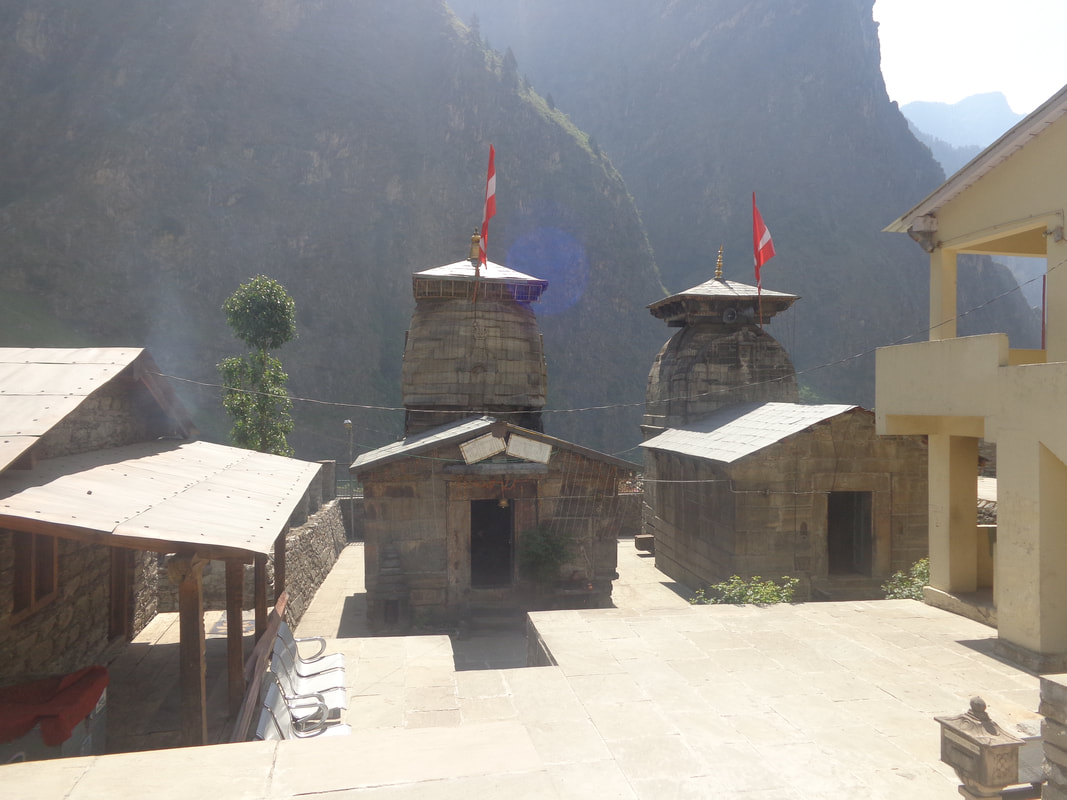Tucked away in the serene valleys of Uttarakhand, Yogadhyan Badri is a sacred destination that draws pilgrims and spiritual seekers alike. Unlike the more famous Badri temples, this shrine is renowned for its emphasis on meditation, inner peace, and spiritual reflection. Nestled amidst pristine forests and flowing rivers, Yogadhyan Badri offers an opportunity to connect with nature and the divine in a deeply personal way.
Often referred to as the “Badri of Yogic Contemplation,” this temple holds a unique place in Hindu mythology. It is believed that the deity here embodies eternal meditation, guiding devotees toward self-realization and harmony. The journey to Yogadhyan Badri is not just a pilgrimage; it is a transformative experience that blends spirituality, adventure, and tranquility.
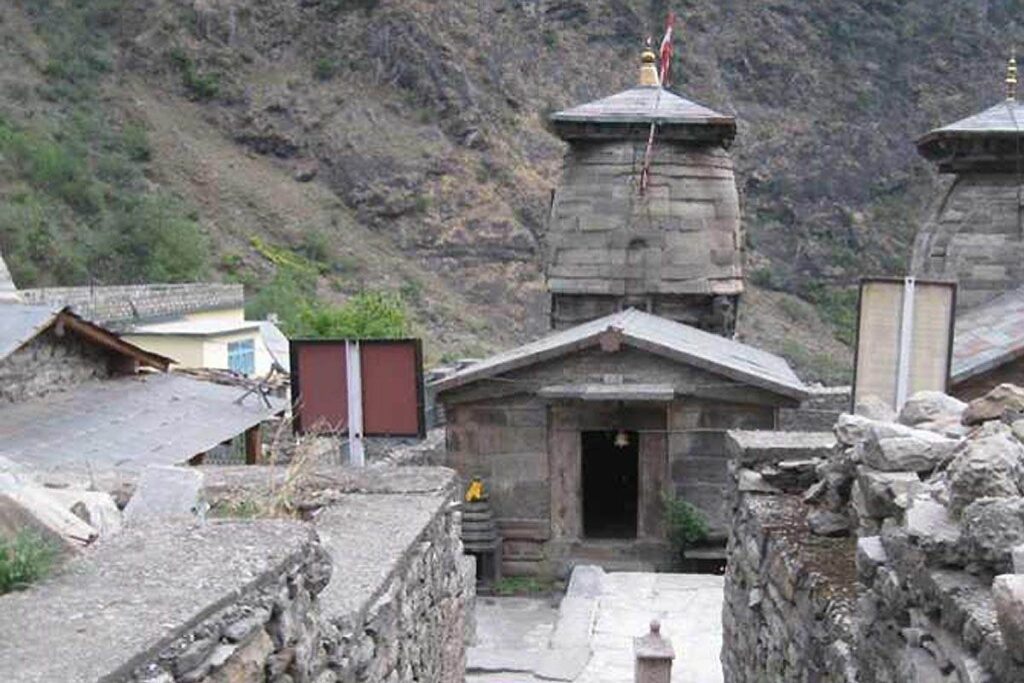
Mythological Significance of Yogadhyan Badri
Yogadhyan Badri is deeply rooted in Hindu mythology, particularly in stories connected with Lord Vishnu and the Panch Badri circuit. The temple is said to be a manifestation of Vishnu in a meditative posture, symbolizing the balance between worldly duties and spiritual insight.
Legends of Yogadhyan Badri
- Lord Vishnu in Deep Meditation – Local folklore describes how Lord Vishnu entered a meditative state in this location to observe the cycles of time and the evolution of human consciousness. Devotees believe that the deity’s meditative energy blesses those who seek guidance in life.
- Sage Vyasa’s Visits – Sage Vyasa, the legendary author of the Mahabharata, is said to have meditated at this site, gaining insights and cosmic knowledge. His connection gives the temple its spiritual depth.
- Connection with Other Badri Temples – Yogadhyan Badri is part of the Panch Badri circuit, along with Badrinath, Bhavishya Badri, Adi Badri, and Vriddha Badri. This network of temples represents different aspects of Vishnu: protection, prophecy, meditation, wisdom, and guidance.
Through these legends, Yogadhyan Badri is recognized not only as a place of worship but also as a spiritual retreat for seekers of knowledge and meditation.
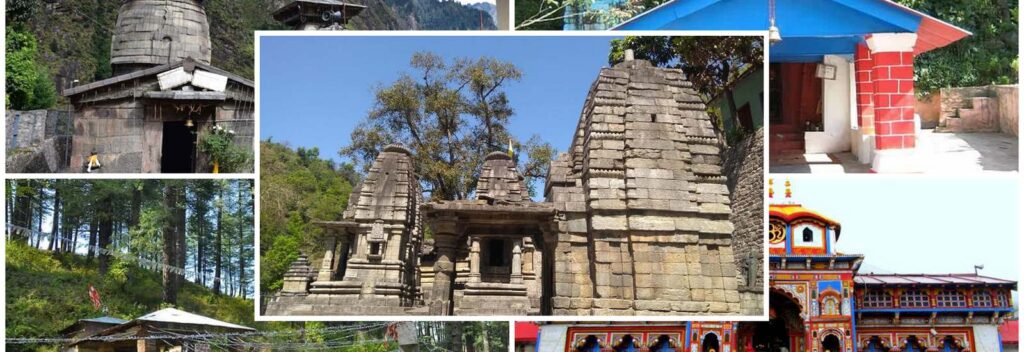
Location and Accessibility
Yogadhyan Badri is a serene Himalayan temple tucked away in the Chamoli district of Uttarakhand. Unlike the more frequented Badrinath or Kedarnath temples, Yogadhyan Badri remains relatively undiscovered, which adds to its tranquil and spiritual charm. Its location amidst dense forests, flowing rivers, and snow-capped peaks makes it not only a sacred destination but also a haven for nature lovers and adventure enthusiasts. Understanding its location and accessibility is essential for planning a successful pilgrimage or trip to this unique spiritual destination.
Geographical Location
Yogadhyan Badri is situated in the Garhwal region of the Indian Himalayas, approximately 3,000 meters above sea level. The temple lies deep in the Chamoli district, surrounded by lush valleys, pine and oak forests, and alpine meadows. The location itself reflects the meditative and peaceful essence of the shrine, providing visitors with a perfect environment for spiritual reflection and introspection.
The temple is strategically located along the Panch Badri circuit, which includes Badrinath, Bhavishya Badri, Adi Badri, and Vriddha Badri. Each of these temples represents different aspects of Lord Vishnu, and Yogadhyan Badri specifically symbolizes meditation, spiritual wisdom, and inner peace. The serene surroundings make it an ideal retreat from the bustle of modern life.
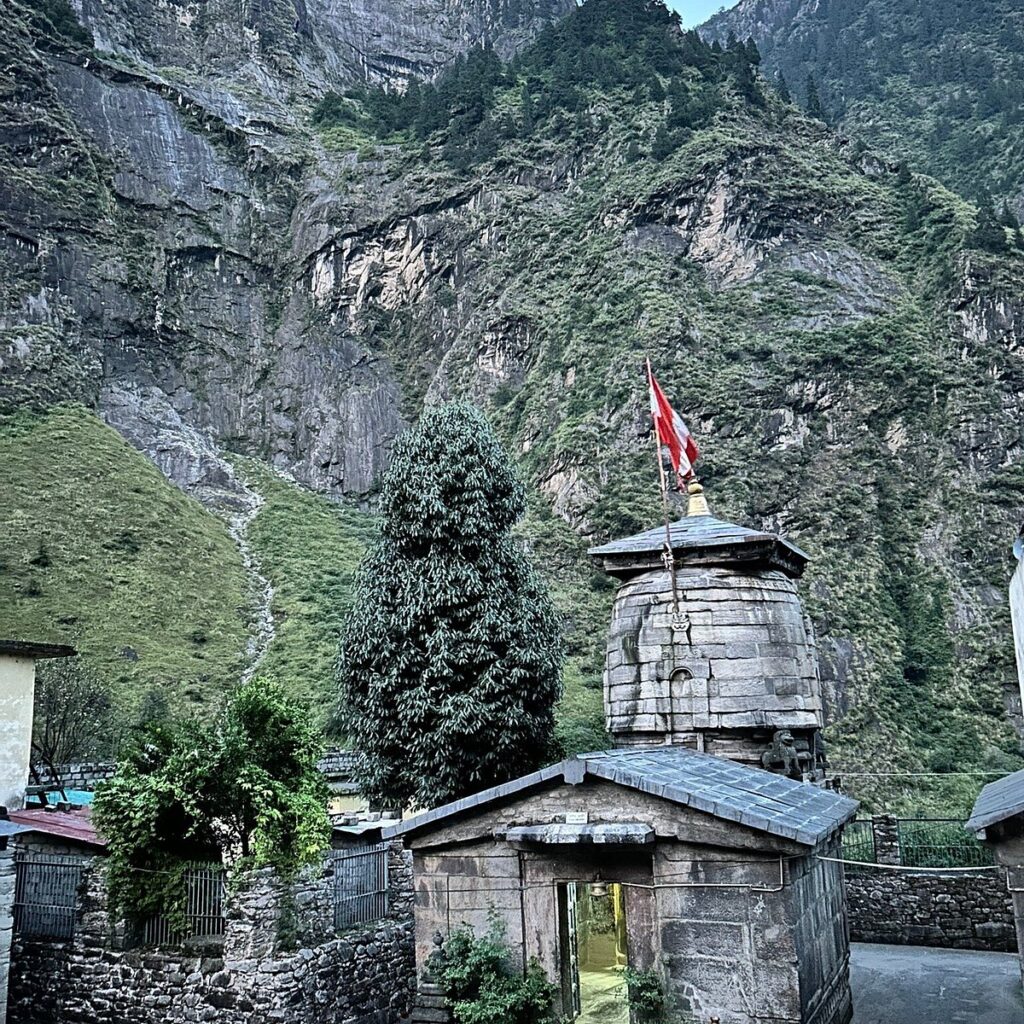
Accessibility Overview
Although Yogadhyan Badri is in a remote location, it is accessible through a combination of road travel, trekking, and air travel. The journey itself is considered a part of the pilgrimage experience, allowing devotees and travelers to connect with nature and engage in self-reflection.
Key Points About Accessibility
- The temple is not directly reachable by private vehicles, maintaining its untouched and pristine environment.
- Visitors must travel by road to a base village or campsite and then proceed on foot along designated trekking routes.
- The surrounding terrain is mountainous, and certain paths may be moderately challenging, requiring physical preparedness and planning.
Road Connectivity
Reaching Yogadhyan Badri by road involves traveling to the nearest towns in Chamoli district and then proceeding toward the base of the trekking routes.
Major Road Routes
- From Rishikesh – Rishikesh, a major spiritual hub and gateway to the Garhwal Himalayas, is approximately 220 kilometers from Yogadhyan Badri. Buses, taxis, and private vehicles can take travelers to towns like Joshimath or Karnaprayag, which serve as base points for the trek.
- From Dehradun – The capital city of Uttarakhand, Dehradun, is about 280 kilometers away. The route passes through scenic valleys, small villages, and mountain passes. Road travelers can experience picturesque landscapes and the spiritual aura of the region even before reaching the temple.
- Local Transport – From base villages such as Tapovan or nearby settlements, pilgrims can hire local guides or porters to navigate the trekking paths safely. This ensures that even those unfamiliar with mountainous terrain can access the temple comfortably.
The road journey itself is scenic, passing through rivers, dense forests, and small Himalayan settlements, giving travelers a sense of adventure and anticipation for the spiritual experience ahead.
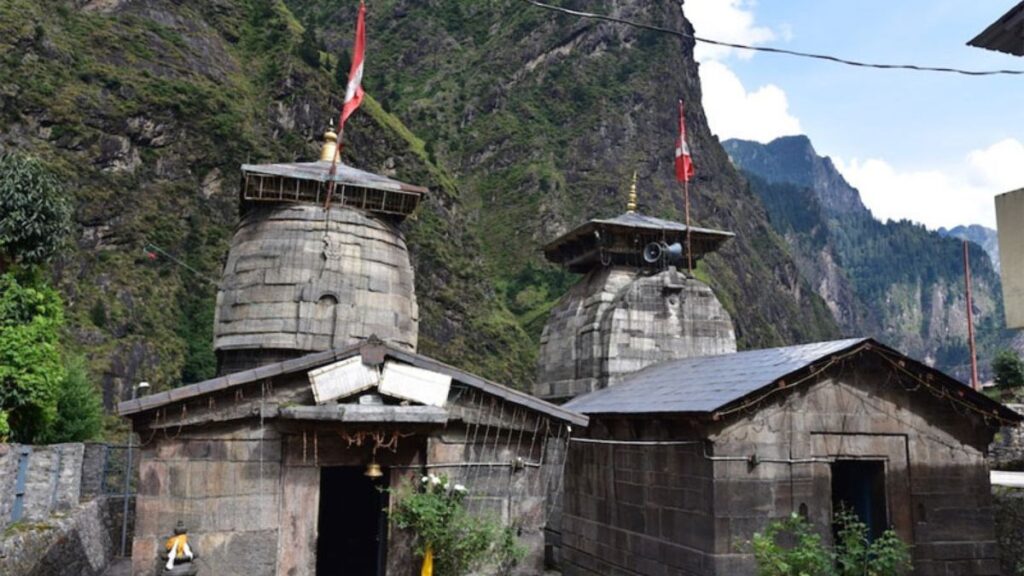
Rail Connectivity
For those who prefer traveling by train, Rishikesh railway station is the nearest major railhead. It connects to multiple cities, including Delhi, Haridwar, and Dehradun.
Benefits of Rail Travel
- Convenience – Many long-distance travelers find train journeys more relaxing, as they can rest before beginning the trek.
- Accessibility – Rishikesh is well connected to other pilgrimage destinations, allowing travelers to plan a combined spiritual itinerary.
- Scenic Route – Traveling through the plains and foothills provides glimpses of rivers, forests, and the Himalayas in the distance.
From Rishikesh, travelers can hire taxis or take buses to reach base points like Joshimath or Karnaprayag, which serve as the starting point for trekking to Yogadhyan Badri.
Air Connectivity
The nearest airport to Yogadhyan Badri is Jolly Grant Airport in Dehradun, approximately 280 kilometers away. This airport handles flights from major Indian cities such as Delhi, Mumbai, and Bangalore.
Air Travel Advantages
- Time-Saving – Air travel reduces journey time significantly, allowing more time for the trek and temple visit.
- Comfort – Travelers can avoid long road journeys and start the pilgrimage fresh and energized.
- Flexibility – Multiple daily flights from major cities provide convenient options for scheduling trips.
After landing at Dehradun, travelers can hire taxis, join tour groups, or take buses to reach the base of the trekking route to Yogadhyan Badri.
Trekking Access
Reaching the temple requires a moderate trek from the nearest base village or settlement. The trek is an integral part of the pilgrimage, blending adventure with spiritual experience.
Trek Highlights
- Duration – The trek usually takes 5 to 6 hours depending on the pace and starting point.
- Scenic Beauty – Pine and oak forests, alpine meadows, mountain streams, and waterfalls provide a visually captivating journey.
- Spiritual Journey – The trekking path symbolizes the pilgrim’s journey toward inner peace and self-discovery.
- Local Guidance – Hiring a local guide ensures safety, shares insights about legends, and helps navigate the trails efficiently.
The trek is not just a physical challenge; it is a metaphorical journey, reflecting the essence of meditation and reflection associated with Yogadhyan Badri.
Seasonal Accessibility
The best time to visit Yogadhyan Badri depends on weather conditions and safety.
Ideal Seasons
- Winter (October to February) – Cool and clear weather makes trekking easier and the temple atmosphere pleasant.
- Summer (March to June) – Moderate temperatures allow exploration, though early mornings and evenings are preferable.
- Monsoon (July to September) – Heavy rains may make trails slippery and challenging. Travel is generally discouraged during peak monsoon months.
Planning the visit according to the season ensures safety, comfort, and a more immersive spiritual experience.
Supporting Infrastructure
Though remote, the region around Yogadhyan Badri has essential facilities for travelers:
- Guesthouses and Dharamshalas – Located in nearby villages, these provide simple accommodation for pilgrims.
- Local Shops – Small shops along the trekking route offer snacks, water, and basic supplies.
- Guides and Porters – Local guides provide insights into temple legends, geography, and trekking tips.
- Emergency Support – Basic medical facilities are available in nearby towns like Joshimath for emergencies during the trek.
The combination of natural isolation and basic support infrastructure ensures a safe yet spiritually immersive pilgrimage.
Connectivity Summary
- Road: Rishikesh, Dehradun, Joshimath, Karnaprayag
- Rail: Rishikesh railway station
- Air: Jolly Grant Airport, Dehradun
- Trek: 5–6 hours from base village
- Best Season: October to February for safe and comfortable travel
Despite its remote location, Yogadhyan Badri is accessible with careful planning. The combination of road, rail, air, and trekking ensures that pilgrims, spiritual seekers, and adventure travelers can experience the temple in its pristine environment.avel and trekking, providing a spiritual and physical challenge that adds depth to the pilgrimage.
Trekking to Yogadhyan Badri
The trek to Yogadhyan Badri is considered moderate to challenging, depending on the starting point and the chosen route. Pilgrims often describe the journey as a spiritual experience in itself, with nature guiding their steps and offering moments of reflection.
Trek Highlights
- Forests and Flora – The trail passes through pine, oak, and rhododendron forests, providing a serene environment for meditation.
- Mountain Streams – Small rivers and streams along the trek offer refreshing stops and moments of introspection.
- Himalayan Wildlife – Birds, small mammals, and sometimes elusive Himalayan deer add life to the trail.
- Village Interactions – Local villagers share stories of the temple and offer simple meals, enhancing the cultural experience.
The trek is not only a physical endeavor but also a metaphorical journey toward inner balance, reflecting the meditative essence of the temple itself.
Temple Architecture and Spiritual Atmosphere
Yogadhyan Badri’s architecture is simple yet profound, mirroring the meditative aspect of the deity it houses. Unlike grand temples with elaborate ornamentation, this shrine focuses on creating an atmosphere conducive to contemplation and spiritual connection.
Key Features
- Meditative Deity – Lord Vishnu is depicted in a deep meditative posture, symbolizing eternal wisdom and cosmic awareness.
- Stone and Wood Construction – The temple blends seamlessly with its natural surroundings, using local materials for construction.
- Open Courtyard – The courtyard allows for meditation, yoga practice, and spiritual gatherings under the open sky.
- Views of Himalayan Peaks – The temple’s elevated location provides breathtaking vistas, reinforcing a sense of divine presence and tranquility.
The simplicity of the temple allows devotees to focus entirely on their spiritual practice, whether through prayer, meditation, or quiet reflection.
Pilgrimage Practices at Yogadhyan Badri
The spiritual practices at Yogadhyan Badri are deeply connected to meditation, devotion, and self-realization. Unlike crowded pilgrimage sites, this temple emphasizes personal experience and inner growth.
Rituals and Traditions
- Morning Aarti – Conducted daily, it involves chants, bells, and conch shells, creating an atmosphere of spiritual energy.
- Meditation Sessions – Devotees are encouraged to meditate near the deity or in the surrounding forests to absorb the sacred vibrations.
- Simple Offerings – Fruits, flowers, and incense are preferred, reflecting the temple’s focus on purity over extravagance.
- Yoga Practices – The serene surroundings are ideal for performing yoga asanas and breathing exercises, aligning the body and mind.
These practices make the temple a haven for those seeking spiritual rejuvenation and inner peace.
Nearby Attractions
Visiting Yogadhyan Badri also provides opportunities to explore the natural and cultural treasures in the surrounding area.
1. Alaknanda River
One of the first and most prominent attractions near Yogadhyan Badri is the Alaknanda River, a sacred tributary of the Ganges. The river flows gracefully through the valleys, creating a serene environment that complements the spiritual aura of the temple.
Highlights of Alaknanda River
- Spiritual Significance – Pilgrims often perform ritual baths in the river, believing that it purifies the body, mind, and soul before reaching the temple.
- Natural Beauty – Surrounded by snow-capped peaks, dense forests, and alpine meadows, the river provides a picture-perfect setting for reflection and meditation.
- Recreational Opportunities – Walking along the riverbanks, photography, and light trekking near the river offer opportunities for adventure in a calm setting.
The Alaknanda River not only enhances the scenic beauty of the area but also reinforces the sacred energy associated with Yogadhyan Badri.
2. Vishnu Prayag
Vishnu Prayag is another nearby attraction, a sacred confluence where the Alaknanda meets the Dhauliganga River. It is considered one of the Panch Prayags, or five holy confluences of the Garhwal Himalayas.
Why Vishnu Prayag is Special
- Religious Importance – The confluence is steeped in mythology, with devotees offering prayers to Lord Vishnu for protection, prosperity, and spiritual guidance.
- Scenic Views – The meeting of the two rivers against the backdrop of the Himalayan peaks provides stunning vistas, especially during sunrise and sunset.
- Cultural Experience – Local rituals and small shrines at the confluence showcase the region’s spiritual richness.
Visiting Vishnu Prayag allows pilgrims to connect with sacred waters, enhancing the spiritual journey from the temple to surrounding attractions.
3. Traditional Himalayan Villages
The area around Yogadhyan Badri is dotted with quaint Himalayan villages, offering travelers a glimpse into local life and traditions. These villages are small, serene, and culturally rich, providing a sense of timelessness.
Experiences in Himalayan Villages
- Architecture – Stone and wooden houses, with intricate carvings, reflect the region’s architectural heritage.
- Cuisine – Visitors can savor traditional dishes such as lentils, steamed rice, and locally grown vegetables.
- Festivals and Local Culture – Villagers celebrate regional festivals, performing traditional songs and dances that offer a window into their customs.
- Hospitality – Warm and welcoming locals provide guidance, share stories, and sometimes offer simple meals to travelers.
These villages allow visitors to immerse themselves in authentic Himalayan life, bridging spiritual exploration with cultural learning.
The surrounding region complements the spiritual essence of Yogadhyan Badri, making the pilgrimage holistic.
Festivals and Cultural Significance
Although relatively secluded, Yogadhyan Badri participates in important Hindu festivals:
- Janmashtami – Celebrates the birth of Lord Krishna with prayers and devotional songs.
- Diwali – Devotees light lamps, symbolizing the triumph of light over darkness.
- Meditation Retreats – Occasionally, spiritual organizations conduct yoga and meditation camps, attracting seekers from across India.
These festivals and retreats reinforce the temple’s role as a center for spiritual awakening and community devotion.
Tips for Pilgrims
Visiting Yogadhyan Badri requires preparation due to its remote location and trekking component.
- Carry Essentials – Water, snacks, warm clothing, and a first-aid kit are important.
- Travel Light – Simplified luggage ensures ease during trekking.
- Hire Local Guides – Guides enhance safety and provide insights into mythology and local culture.
- Respect Nature and Traditions – Maintain cleanliness, follow temple customs, and avoid littering.
- Acclimatize – Spend time at lower altitudes before trekking to higher elevations.
By following these tips, pilgrims can maximize the spiritual and natural experience at Yogadhyan Badri.
Spiritual Lessons from Yogadhyan Badri
Yogadhyan Badri is not just a temple; it is a school of meditation and self-realization. The surroundings, deity, and legends convey important lessons:
- Inner Peace is Eternal – The meditative posture of Lord Vishnu teaches the value of inner calm amidst worldly challenges.
- Harmony with Nature – Spirituality and nature coexist here, emphasizing environmental mindfulness.
- Faith Beyond Time – Yogadhyan Badri, like other Badri temples, symbolizes the timeless presence of divine guidance.
The temple encourages pilgrims to integrate these lessons into their daily lives, making the journey transformative beyond the physical pilgrimage.
FAQs for Yogadhyan Badri
- Where is Yogadhyan Badri located?
Yogadhyan Badri is located in the Chamoli district of Uttarakhand, amidst the Garhwal Himalayas. - Why is Yogadhyan Badri important?
It is one of the Panch Badri temples and is revered for its serene atmosphere where devotees meditate and seek spiritual peace. - How to reach Yogadhyan Badri?
Accessible via road from Joshimath and a short trek from nearby villages; the journey is scenic with Himalayan views. - What is the best time to visit Yogadhyan Badri?
The ideal months are April to June and September to October, when the weather is pleasant. - Are there any special festivals celebrated here?
The temple celebrates Hindu festivals like Badri-Kedar Utsav and local religious events with traditional rituals. - Is trekking required to reach Yogadhyan Badri?
Yes, a short trek is required from the nearest roadhead, suitable for pilgrims of all ages. - Are accommodations available near Yogadhyan Badri?
Basic guesthouses and lodges are available in nearby towns like Joshimath for pilgrims. - Can Yogadhyan Badri be visited year-round?
No, winter months bring snow and difficult access. Summer and early autumn are the best visiting periods. - What is unique about Yogadhyan Badri?
The temple is famous for its peaceful ambiance, making it ideal for meditation and spiritual reflection. - Is Yogadhyan Badri part of the Panch Badri circuit?
Yes, it is one of the five sacred Badri temples: Adi Badri, Bhavishya Badri, Yogadhyan Badri, Vriddha Badri, and Nilkanth Badri.

